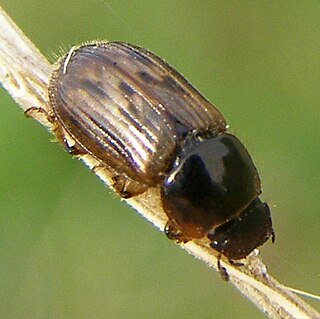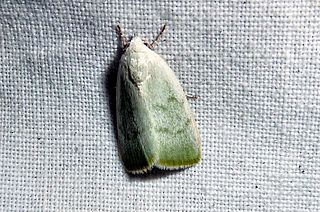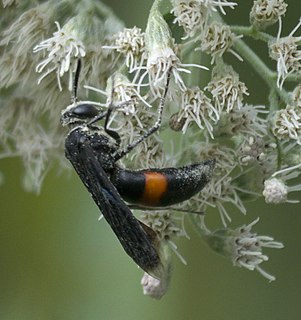Related Research Articles

Johan Christian Fabricius was a Danish zoologist, specialising in "Insecta", which at that time included all arthropods: insects, arachnids, crustaceans and others. He was a student of Carl Linnaeus, and is considered one of the most important entomologists of the 18th century, having named nearly 10,000 species of animals, and established the basis for the modern insect classification.

Pentatomidae is a family of insects belonging to the order Hemiptera, generally called shield bugs or stink bugs. Pentatomidae is the largest family in the superfamily Pentatomoidea, and contains around 900 genera and over 4700 species. As hemipterans, the pentatomids have piercing sucking mouthparts, and most are phytophagous, including several species which are severe pests on agricultural crops. However, some species, particularly in the subfamily Asopinae, are predatory and may be considered beneficial.

Jens Schou Fabricius was the Norwegian appointed Minister of the Navy 1817–1818. He served as a representative for Søe-Deffensionen at the Norwegian Constitutional Assembly at Eidsvoll in 1814. During his naval career he served first the Danish Crown until the separation in 1814 of Norway from Denmark, and thereafter the Norwegian-Swedish Crown. Fabricius retired from the navy as a vice admiral.

Amphipyra is a genus of moths. It is the only genus remaining in the subfamily Amphipyrinae, the others having been removed, e.g., to the Hadeninae.

The white-shouldered house moth is a species of gelechioid moth. It belongs to the subfamily Oecophorinae of the concealer moth family (Oecophoridae), just like the brown house moth. Though several presumed congeners of E. sarcitrella were described, its genus Endrosis is currently understood to be monotypic.

Aphodius is a genus of beetles in the family Scarabaeidae. In most species both the adults and larvae are coprophagous although some species have herbivorous or saprophagous larvae. Aphodius species typically dominate dung beetle communities in north temperate ecosystems. Most species are functionally classified as endocoprids, also known as dwellers, because the larvae live and feed within the dung pat itself.

Gagitodes sagittata, the marsh carpet, is a moth of the family Geometridae. The species was first described by Johan Christian Fabricius in 1787. It is found in eastern Asia, including Japan, Korea and China and in central and northern Europe. It is sometimes included in the genus Perizoma

Olindia schumacherana, also known as the white-barred tortrix, is a moth of the family Tortricidae found in most of Europe. The moth was first described by the Danish zoologist, Johan Christian Fabricius in 1787.

Micropterix tunbergella is a moth of the family Micropterigidae. It is found in most of Europe, except Bulgaria, Croatia, Finland, Ireland, Italy, Portugal, and Slovenia.

Chrysomela is a genus of leaf beetles found almost throughout the world, but not in Australia. It contains around 40 species, including 7 in eastern and northern Europe. It also includes at least 17 species in North America, including the cottonwood leaf beetle Chrysomela scripta.

Saperda is a genus of flat-faced longhorn beetles belonging to the family Cerambycidae, subfamily Lamiinae. The genus was erected by Johan Christian Fabricius in 1775.

Earias vernana is a species of moth in the family Nolidae first described by Johan Christian Fabricius in 1787. It is found in most of southern and central Europe.

Ceroplesis is a genus of flat-faced longhorn beetle in the subfamily Lamiinae of the family Cerambycidae.

Dorcadion cinerarium is a species of beetle in the family Cerambycidae. It was described by Johan Christian Fabricius in 1787, originally under the genus Lamia. It is known from Ukraine, Azerbaijan, and Russia.

Stizoides is a genus of kleptoparasitic sand wasps in the family Crabronidae. There are at least 30 described species in Stizoides.
References
- ↑ Nuss, M.; et al. (2003–2011). "GlobIZ search". Global Information System on Pyraloidea. Retrieved September 29, 2011.
- ↑ "Eucarphia vinetella (Fabricius, 1787)". Fauna Europaea. Retrieved March 13, 2018.